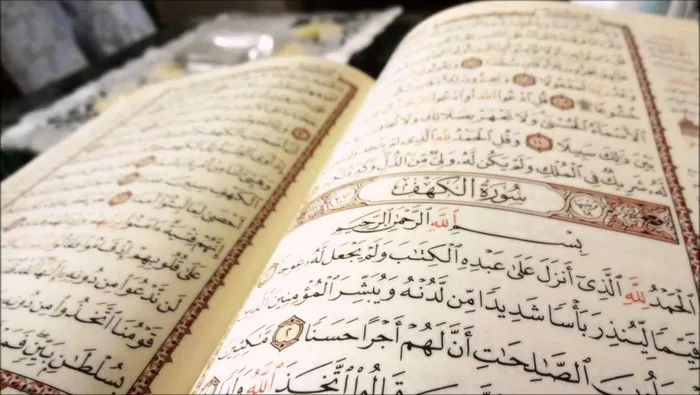The age of religious texts like the Quran and the Bible has long been a subject of scholarly debate and inquiry. These ancient scriptures hold profound significance for billions of people worldwide, shaping the beliefs, practices, and cultures of diverse societies. Determining the precise age of these texts involves delving into historical, archaeological, and textual evidence, as well as navigating the complexities of religious tradition and interpretation. In this article, we embark on a meticulous exploration to uncover the ages of the Quran and the Bible, shedding light on their origins and historical contexts.
Understanding the Quran: An Ancient Revelation
The Quran, the holy book of Islam, is believed by Muslims to be the literal word of God as revealed to the Prophet Muhammad over a period of approximately 23 years, beginning in 610 CE and concluding in 632 CE, the year of Muhammad’s death. This revelation occurred through angel Gabriel and was transmitted orally by Muhammad to his companions, who memorized and transcribed it into written form. However, the compilation of the Quran into a single written text took place after Muhammad’s death during the caliphate of Abu Bakr and was finalized during the reign of the third caliph, Uthman ibn Affan, around 650 CE.
Scholars generally agree on the approximate time frame of the Quran’s revelation, which occurred in the early 7th century CE. However, pinpointing the exact age of the Quranic text as we have it today involves examining early manuscripts, archaeological evidence, and historical records. The earliest extant manuscripts of the Quran date back to the late 7th and early 8th centuries CE, such as the Sana’a manuscript and the Birmingham Quran manuscript. These manuscripts provide valuable insights into the textual integrity and transmission of the Quran during its formative period.
Deciphering the Bible: A Tapestry of Ancient Texts
Unlike the Quran, which Muslims believe to be the direct revelation of God, the Bible is a collection of religious texts comprising various books, writings, and teachings sacred to Judaism and Christianity. The Bible is divided into two main sections: the Old Testament, which contains writings sacred to Judaism, and the New Testament, which documents the life, teachings, and works of Jesus Christ and the early Christian community.
Determining the age of the Bible entails unraveling the complex histories of its constituent texts, many of which were composed over centuries and underwent multiple stages of editing, compilation, and translation. The Old Testament draws upon a rich tapestry of ancient Hebrew and Aramaic writings, including the Torah (the first five books of the Hebrew Bible), the Prophets, and the Writings. These texts were transmitted orally and later written down, with the earliest manuscripts dating back to the 2nd century BCE.
Similarly, the New Testament comprises writings attributed to various authors, including the Gospels, Acts of the Apostles, Epistles, and Revelation. The Gospels, which recount the life and teachings of Jesus Christ, were written between the 1st and 2nd centuries CE, with the earliest known fragments dating to the late 1st century CE. The Epistles, attributed to early Christian leaders such as Paul and Peter, were composed between the 1st and 2nd centuries CE, providing insights into the theological and doctrinal development of early Christianity.
Comparative Analysis: Quran vs. Bible
When comparing the ages of the Quran and the Bible, it is essential to consider their respective historical contexts, transmission processes, and textual traditions. While the Quran is believed by Muslims to be the verbatim word of God revealed to Muhammad in the 7th century CE, the Bible encompasses a diverse collection of texts spanning centuries and reflecting various cultural, linguistic, and theological influences.
The Quran’s textual integrity and preservation are emphasized in Islamic tradition, with meticulous measures taken to ensure the accuracy of its transmission through oral recitation and written compilation. The standardized text of the Quran, as codified during the caliphate of Uthman ibn Affan, remains remarkably consistent across different manuscript traditions and linguistic variations.
In contrast, the Bible’s development involved a more complex process of textual transmission, translation, and interpretation, resulting in a diverse array of manuscript variants, textual traditions, and theological interpretations. The Old Testament underwent centuries of oral transmission before being compiled into written form, while the New Testament reflects the diverse perspectives of early Christian communities and authors.
Conclusion
In conclusion, the Quran and the Bible represent two of the world’s most influential religious texts, each with its unique history, theological significance, and cultural impact. Determining the precise ages of these texts requires a nuanced understanding of historical, archaeological, and textual evidence, as well as recognition of the complexities of religious tradition and interpretation.
While the Quran’s revelation is traditionally dated to the early 7th century CE, with the standardized text codified in the mid-7th century CE, the Bible comprises a diverse collection of texts spanning centuries of religious and cultural evolution. Both texts continue to inspire devotion, scholarship, and debate, shaping the beliefs and practices of millions of adherents worldwide.


